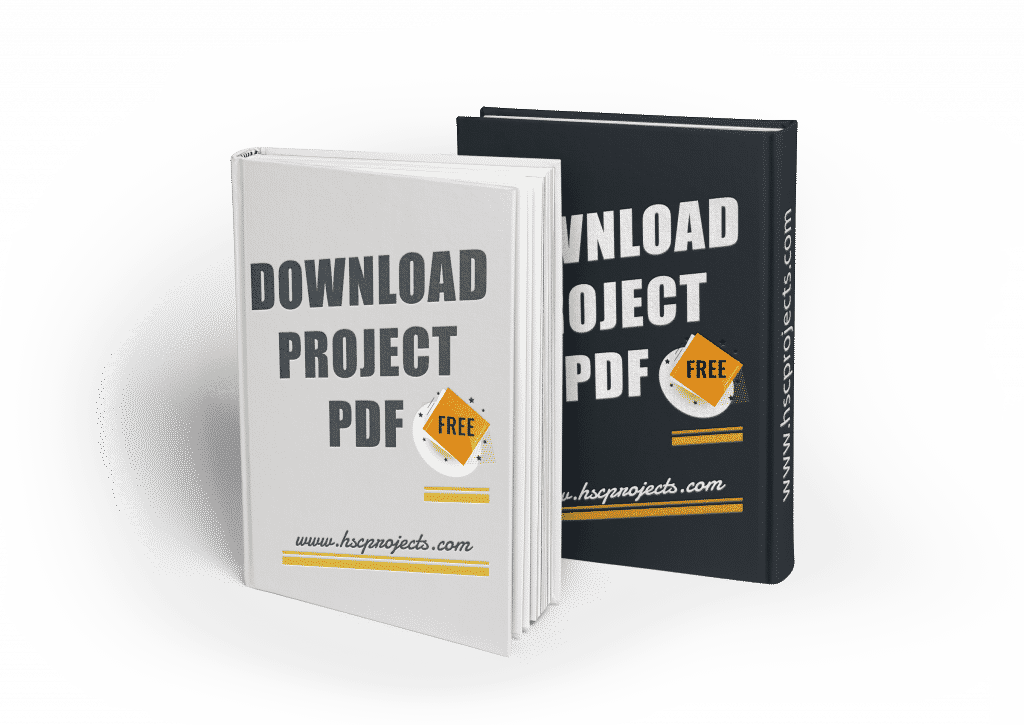
Forms Of Markets – Economics Project
MARKET:
A set up where two or more parties engage in an exchange of goods, services and the information is called a market. Ideally, a market is a place where two or more parties are involved in buying and selling. The two parties involved in a transaction are called seller and buyer. This Forms of markets economics project will include all the projects guidelines and the required titles you need for the completion of the project

- Market Size:
The market size is directly proportional to two factors:
- The number of sellers and buyers.
- Total money involved annually.
Market On The Back Of Competition Or Level Of Influence Of Individual Seller On The Market:
- Perfect Competition:
Pure competition is part of the perfect competition.
- Imperfect Competition:
- Monopoly
- Monopolistic Competition
- Oligopoly
CONTENTS:
- Perfect Competition
1.1 Definition
1.2 Features and Implications - Monopoly
2.1 Definition
2.2 Features & Implication - Monopolistic Competition
3.1 Definition
3.2 Features and Implications - Oligopoly
4.1 Definition
4.2 Features and Implications - Conclusion
- Bibliography

PERFECT COMPETITION:
It is a market situation where there was a large number of buyers and sellers selling a similar product at a single uniform price. The price in this market is set by industry by the free play of demand and supply. Examples:
- Stock Market
- Grain Market
- Raw Gold Market
Features:

- A large number of Buyers and Sellers: The large number indicates the ineffectiveness of a single seller or buyer to influence the prevailing market price on its own as each seller or buyer has an insignificant share in market supply or market demand.
Implication: The output sold by each firm is minimal as compared to the total production of all the firms combined. Thus by increasing or decreasing quantity supplied, a seller cannot effectively market supply as he sells only a small proportion of market supply. In this way, the firm does not have bargaining power and hence is a price-taker. - Homogeneous Product: These goods which are identical concerning quality, size, design, and color are called similar product.
Implication: Uniform price prevails for the products of all the firms in the industry and these who charge high price loses their customers. These goods also rule out the possibilities of advertisement and selling costs. - Free Entry and Exit: There is no legal restriction or barrier to entry or exit of firms. Firms are free to start producing the commodity or to stop production. A firm seeking profit can enter the market, and any firm suffering losses can exit the market.
Implications: The freedom of entry and exit of firms has an important implication. This ensures that no firm can earn above-normal profits in the long run. - Perfect Knowledge: Buyers and sellers are fully aware of the price and other market conditions.
Implication: The firms have all knowledge about the product market and the input markets, and thus, each firm has equal access to the technology and the inputs used in the technology. No firm has any cost advantage. - Perfect Mobility of Factors: The resources used in the production process like energy, labor, raw material can move easily in and out of an industry. There are no artificial barriers, no natural barriers.
Implication: The market supply of the commodity and FOP is equal in all parts of the market.
- No Extra Transportation Cost: It is assumed that different firms work close to each other in such a way that there is no transportation cost, and count them as part of the cost of production
- Demand Curve Parallel to X-axis: It means every additional is sold a prevailing price and hence AR=MR=Perfectly elastic curve. In other words, a firm can sell any quantity at a price determined by the intersection of market demand and supply
Also, Check – Marketing Management – Fruit Juice
EFFECTS OF FREE ENTRY AND EXIT:
- Abnormal Profit or Super Normal Profits in the Short Run:
Suppose market price as given by the industry is high enough such that the firms are making Abnormal Profit. This will attract new firms. On the one hand, it will lead to more supply leading to falling in the price of the product. On the other hand, it will lead to more demand for factors like land, labor, which causes factor prices to rise and consequently higher above average cost. Thus, the fall in the price of product and rise in AC of production will lead to falling in Abnormal Profits.
- Losses in the Short Run:
Suppose the market price determined by the industry is low enough such that firms are incurring losses. In the short run, a firm can afford to incur losses but never in the long run. Hence, in the situation of losses, some existing inefficient firms will quit the industry. Fewer numbers for firms in the industry will mean less supply and consequently rise in the price of the product. Thus, the effect of free entry and exit of firms will be zero abnormal profit in the long-run equilibrium, and there will be no entry or exit.
Pure and Perfect Competition:
Pure competition is part and parcel of the perfect combination, and it is used in a restricted sense. If the first three conditions are fulfilled, it is pure competition, and when all conditions are prevailing, it is a cause of perfect competition.
- The concept of Pure Competition was given by Chamberlin.
- Pure competition is more realistic than perfect competition.
It is a market structure in which there is a single firm selling the commodity, and there are no close substitutes of the commodity. It is derived from two Greek words, “Monos,” meaning single and “Poly,” meaning seller.
For Example, McDonald’s, Railways owned by Government, until 1960, Xerox was the only company to manufacture and sell paper photocopy machines.
Features:
- Single Seller and a Large Number of Buyers: There is a single seller of a commodity, and it may be in the form of a firm, a group of firms, a joint-stock company.
Implication: Since a monopoly produces the industry’s entire output, there is no difference between firm and industry.
- No Close Substitute: The product sold by the monopolist has no perfect substitute. However, the product may have substitutes like inventor and generator.
Implication: Because the cross elasticity is zero, the consumers have to buy the product from monopolist or go without it. - Barriers to Entry: There are legal, natural, or technical barriers for entry of new firms so as to avoid competition and control the supply and hence, the price of the commodity.
Implication: Thus firm is able to earn a supernormal profit in the long run - Full Control Over Price: A monopoly firm is an industry in itself and hence, a price maker. A monopoly firm earns abnormal profits in the long run.
- The possibility of Price Discrimination: A monopolist often charges different prices for different customers or markets or uses for the same product. This is called Price Discrimination.
Implication: A monopolist can increase its profit if it is possible to charge different prices from different markets. - Demand Curve is Downward Sloping: To sell more quantity, a monopoly firm has to reduce the price of the product in spite of being a price maker.
Implication: The monopolist tries to increase profit by restricting the supply of the product and fixing high prices. This form of the market goes in favor of the seller.
Also, Check – Economics Project – Inflation CBSE class 12th
MONOPOLY COMPETITION:
It is a market situation that has an element of both perfect competition and monopoly. It is a mid-way situation between perfect competition and monopoly.
- Monopoly + Competition = Monopolistic Competition
For Example, Markets of Soap, Toothpaste, AC, Tea, Cycles.

Features:
- A large number of Buyers and Sellers: Each firm acts independently, and each firm has a limited share of the market, and the size of each firm is small.
Implication: a Large number of firms are in the position to influence the price of its own product depending upon the popularity of brands. - Freedom of Entry and Exit: The freedom of entry and exit is there, but firms don’t have absolute freedom to entire into the industry as some firms are legally patented and carry a brand name.
Implication: All firms earn a normal profit in the long run. - Product Difference: It refers to differentiate the product on the basis of brand, size, color, shape, etc.
Implication: A high degree of it increases the demand for the product and enables the firm to charge a price higher than its competitor’s products.
- Selling Cost: They are the expenses that are incurred for promoting sales or for inducing customers to buy the good of a particular brand.
Implication: It creates artificial superiority in the minds of the consumer. - Lack of Perfect Knowledge: Due to a large number of buyers and product differentiation, it is not possible to compare the prices of different products, and thus, buyers are not fully aware of the prices.
- Non-Price Competition: Monopolistic firms generally don’t disturb the price of the product, and they attract customers by giving gifts, services, coupons, and other attractive prizes.
- Downward Sloping Demand Curve: It means to sell more. A firm has to reduce the price due to the availability of close substitutes. It is more elastic or flatter than the demand curve.
- Less Mobility: There is no perfect mobility of factor owners as FOP are not fully aware of prices being paid by different firms to factory owners for their services.
OLIGOPOLY:
Oligopoly is a market situation with only a few sellers. The oligopoly is derived from the Greek words ‘Oligo,’ which means few and ‘Poly’ means to Control.
Example: 1. Airlines 2. Automobile Producers 3. Insurance Sector, Steel.
Features:
- Few Sellers and Many Buyers: It is a market structure in which few firms dominate the industry. Example: Maruti, Hyundai, Tata.
Implication: Each firm commands a significant share of the market and thus can impact the market price of the product.
- Homogeneous Product: Firms in the Oligopolistic Industry may produce either homogeneous products.
- Mutual Interdependence: Away an important feature of oligopoly is mutual interdependence means that firms are significantly affected by each other’s price and output.
Implication: It leads to a price war as if one firm lowers the price, its own sales will increase, at the sales of other firms in the industry decrease.
- Advertisement: An oligopoly firm has to incur any expenditures for the advertisement. The expenditure on the advertisement is aimed primarily at shifting the demand in favor of the advertised product.
- The existence of Price Liquidity: The term price rigidity means that firms would not look to change the prices. It will stick to its price.
- Barriers to Entry: Usually, an oligopolistic firm is also characterized by barriers to entry and exit in the industry. Some common barriers to entry are economies of scale, absolute cost, and patent rights.
- No Price Competition: Same as point number of monopolistic competition.
- Indeterminate Firm’s Demand Curve:
- Innovations
- Controls of an essential resource
- Successful differentiation
- High fixed costs
- Mergers
- Patents
- Cartel
- Anti-Invest legislations
CONCLUSION TABLE:

CERTIFICATE:
This is to certify that the project report is the outcome of my own efforts and my industries. To other words, publications have been duly acknowledged at the relevant places. This project is made as per the guidelines issued by CBSE.
Teacher’s Signature
Examiner’s Signature
ACKNOWLEDGMENT:
I would like to express my special thanks of gratitude to my teacher as well as my principal, who gave me the opportunity to do this wonderful project on the TOPIC – Forms of Market, which also helped me in doing a lot of research, and I came to know about so many things. I am really thankful to them. Secondly, I would also like to thank my parents and friends who helped me a lot in finalizing this project within the limited time frame.
DOWNLOAD PDF OF THE PROJECT

Password: hscprojects.com
In order to download the PDF, You must follow on Youtube. Once done, Click on Submit
Follow On YoutubeSubscribed? Click on Confirm
Download Forms Of Markets – Economics Project PDF







Very good
Thank you very much
You help a lot thank you very much
Thank you so much